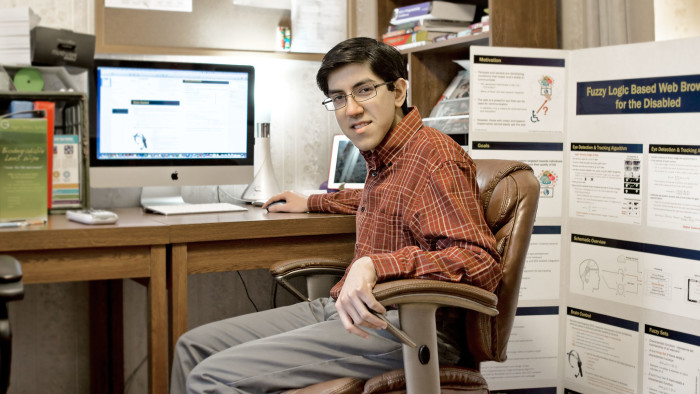‘I found a way of saving the US millions – at 14’

Simply sign up to the Life & Arts myFT Digest -- delivered directly to your inbox.
I’m a freshman in high school near Pittsburgh, and was 15 a few days ago. In March, when I was still 14, my research paper, “A Simple Printing Solution to Aid Deficit Reduction”, was published in the Journal of Emerging Investigators (JEI). It details how every year the government could save $234m by switching the font of its printed documents to Garamond, which is a thinner, lighter font than Times New Roman and Century Gothic and uses less ink.
I got the idea back in the sixth grade, when I noticed that my teachers used a lot of printed handouts. It occurred to me that the fonts they relied on – Arial and Comic Sans mostly – were big and bold and required a great deal of ink. Ink is expensive, about twice as much as French perfume, actually, and I thought it’d be cool to do a science fair project looking at the potential savings if my teachers switched to a more ink-efficient font such as Garamond. To be honest, I didn’t think costs would be so greatly affected. But I found that switching to Garamond could save the school district $21,000.
The editors at the JEI encouraged me to apply my analysis to the federal, state and local governments. Again I found that Garamond promised huge savings. The response was intense. My research was covered by over 100 networks and publications around the world. I was on CNN and CBS’s This Morning, and in The Huffington Post. I did an interview with Ellen DeGeneres. It was really exciting but overwhelming. I had 79 interview requests. My mom started turning them down. She said no to the BBC, CNBC and Queen Latifah. I’d already gotten so much attention. Plus, I thought I should be spending more time on my schoolwork.
I haven’t been contacted by the Government Printing Office, but I’ve heard that they’re looking into my research. For the record, I wasn’t attacking them. My study was only a suggestion. This all started with me trying to get people in my school to change the way they printed handouts, to cut costs. I just wanted to raise awareness that savings were possible. I didn’t necessarily want to get everyone to switch to Garamond.
Neither of my parents are computer people. My mother’s a homemaker and my father’s a business professor at the University of Pennsylvania. I’ve just always been interested in this sort of thing. I love science projects and hope to become a software engineer. I like the problem-solving side of things. It’s like a puzzle.
In my spare time I play the piano. I spend anywhere from a half an hour to six hours a day playing. I love Chopin, Rachmaninoff. I also like to write, which helps me express my feelings and discover new things. This year I won the Scholastic Writing Awards in both poetry and memoir. My memoir, The Colors of Silence, was related to my musical life. It focused on the “rest”, or pause, in a piece of music. For instance, in a large work such as Beethoven’s Fifth Symphony, a rest can be almost frightening or angry, while other rests can be subtler, smoother, kinder, friendlier. I compared the different kinds of rests and what they can mean given the context, and how important they are to both the music and our personal lives.
For this year’s science fair I created a web-browsing system for people with motor disabilities. I measured where on an iPad screen a user is looking and what link they want to navigate to. Using electroencephalography, which tracks electrical activity in the brain, I calculated users’ concentration levels. With my system, paralysed people who can’t use their hands can navigate a web page with their eyes. I’ve just been selected to go to the Intel International Science and Engineering Fair in May.
After that I’m going to take a break. It’s been a busy year and I’d like to relax and enjoy the summer. And work on some piano pieces.
To comment on this article please post below, or email magazineletters@ft.com
Comments